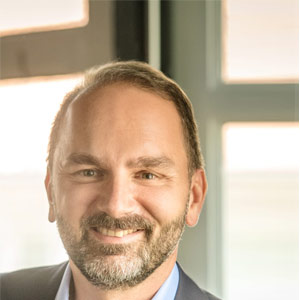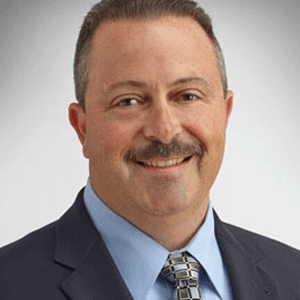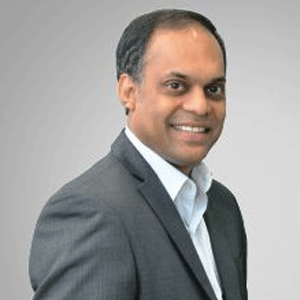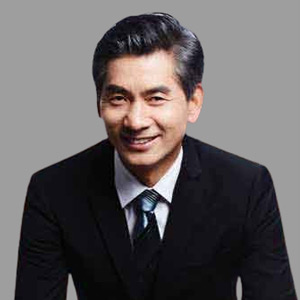THANK YOU FOR SUBSCRIBING

Digital Transformation - An Insurance Practitioner's Critique
Alp Altun, Transformation Programme Director, Prudential


Alp Altun, Transformation Programme Director, Prudential
Digital Transformation – still a thing?
A good time back I got frustrated and started thinking about what it is that makes digital transformation in our insurance industry difficult. Yes, instead of picking up a book, watching a light movie or spending comforting time with the family to get my mind into a more positive mood I sat down and started going down that rabbit hole.I heard in my head:
• the complexity of legacy systems.
• culture and capability: not-invented-here syndrome and/or fear of looking incompetent, coupled with a lack of knowing what is out there or willingness to orchestrate efficiently and effectively.
• we have so much data but not available in a sensible way to give me insights. .
All valid reasons, so I wanted to know how to address those and what their drivers ultimately were. Should be an easy exercise, I thought….
1. The complexity of legacy systems.
The old language, old user experience capabilities that people cannot convert or easily convert into new frameworks, languages and capabilities. So, do we replace or keep and work around and if so, for how long until we find a path of obsolescence? Is it a technology problem? Is it a business design problem? Does it make sense to continue partially obsolete business practices by digitizing them? Who decides the design? Is it the technology/delivery capability that dictates the outcomes or the business that asks for better solutions? What are the pressure points and biases of the requesters (business) and those of the providers (technology)? Why are requesters and providers separated? .
When I went deeper into the analysis of the nature of the requests made and the nature of the solutions designed in response, the disparity became clear: there was no joint review of business drivers and therefore a disjointed solutioning of design and delivery. And here the quick fix of “Go Agile! Go Spotify! Yeay, all problems are now behind us!” was not the solution, it was part of the problem because it obscured the issues we still faced, and, of course, there is no one-size-fits-all approach. .
That led me to my next point:
2. Why were we dysfunctional in the way we were running and supporting our business?
What culture was driving the divide? Pondering this one brought me back to what I call the “Human Condition”: a combination of differing degrees of comfort zone thinking/change aversion, self-preservation instincts and lack of data- and meritocracy-driven leadership. You could have more or less of one or the other, but in combination they were deadly.
Throw in fear of failure or looking incompetent in “your” area of expertise and you get a very high motivation for silo-building and intransparency. Which drives inward-looking solutioning and division.
Understanding better what I was looking at I realized it was not really only a technology delivery problem, although it is convenient to ascribe it to it. Equally, I realized that the input needed to be questioned objectively as to the efficacy and impact of outcomes that were expected.
It is like saying: the fundamentals of our business are set, let us work on the fringes, akin to saying an internal combustion engine is mandatory for a car, and look at how to design the cabin better. All nice and well until, for example, EV technology comes along and takes 79% of new car registrations in Norway, along with the space it creates in the interior. Form follows function. Consequently, if we were not looking at the fundamentals because our information input on consumer behaviour was flawed in both collection and interpretation, resulting in no refresh of our engagement models as they happened in other industries, then could we still speak truly of Transformation? What was needed to understand our relevance and our engagement shortcomings?
3. Ah, Data and its important off-shoot, insights.
We usually had detailed heatmaps of product performance but no information on channel and customer correlation, stemming from point 1, disparate systems that were not able to talk to each other. Yes, I hear you think: Data Lake! :) Yes, try to extract, label, compile again and generate – ideally – automated, intelligent insights. Hmm. So, to make the changes we needed to make to get from incremental growth to disruptive, market-conquering growth we needed to get the info we needed, reliably, fast and accurately. Then look at it with a scientist’s mind, unfettered by Sales KPIs. Let the data speak, test and learn, retest and learn, rinse and repeat as M.O. And here, the snake was biting its tail.
Can we speak of true transformation when we are moving in a non-scientific, largely data-void (Relevance! Correlation!) and un-concerted fashion, without transparency and where everyone has an opinion but only a few are willing to listen across the line? Of course, I am exaggerating massively.
If you want to transform, you need toscale up the horizon of your thinking
Transformation also suggests a journey with a targeted end in sight, the transformed state. That was equally untrue because if we wanted continuous, data-driven improvement, there would never be an end to the change.
Realizing that we were not even able to articulate what we are trying to achieve in a succinct manner, therefore not organizing ourselves in an effective manner, therefore not getting the results we needed, required to address the identified inefficiencies and human behaviour.
So, what is needed for true transformation?
1.Mindset: your design is based on information available at the time. It is not an expression of your genius. Also, you are not God. Once you accept you are fallible, a world of opportunity opens. Take the chance to say: I do not have the answer but let us build the environment that can deliver the best outcome. Measure it, own the process and commit to following where the data takes you.
2.Decouple from the instinct to defend yourself with anything other than objective data. If you look at a problem like an artist’s work where every stroke is intentionally placed and integral to the overall magnificence and hence could not be done in any other way, you are probably going to be magnificent only for a very brief period of time. But if you look at it like a researcher who wants to improve how a vaccine works and understands the journey never ends, you can easily improve on yesterday’s solution and take delight in staying relevant and at the cutting edge.
3.Avoid looking at short-term fixes. If you want to transform, you need to scale up the horizon of your thinking. Understand the difference between strategic capability build and tactical pain relief. More of the former and less of the latter is a good pointer.
4. Have people drive the engagement across stakeholders who can bring credibility, diplomacy and gravitas to the role. Do what is right, not what is opportune. Let the facts speak, and do not engage in playing favours, in short: be sensible, be simple, break things down, and address the elephants in the room. The long-term culture change and resulting psychological safety and data-driven focus are worth the short-term pains with our fellows of the Command’n Conquer world. [AA remark: this is a computer game reference, pls leave as is – thanks]
5. Question yourself and your biases and strive for getting to the best achievable outcomes with the best data basis you can muster. Never take your view as final or as truth – be open to others’ views and insights. A hive mind beats an individual’s, always.
Weekly Brief
I agree We use cookies on this website to enhance your user experience. By clicking any link on this page you are giving your consent for us to set cookies. More info
Read Also
The AI Rat Race - Keeping Up with New Technologies or Waiting for Maturity?
The Role Of Digitalization In Transforming Airport Customer Experiences
From Chemical Solutions to Data Center Innovations
Ethics & Compliance in a Digital World: Navigating HCP Engagement in APAC
How AI is Driving Innovation and Customer-Centricity in Insurance
The Impact of Smart Infrastructure on Growing Cities
Transforming Engineering through Data Science
Redefining Risk Management: Strategies for a Safer Future





















